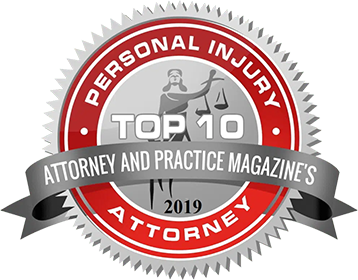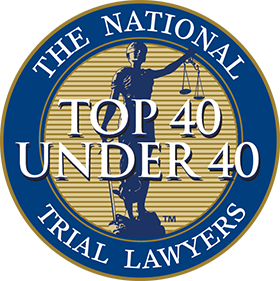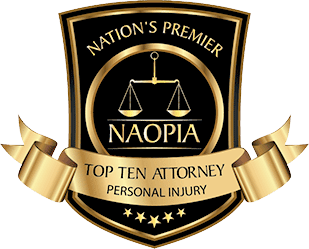From car accidents to slip and fall cases, photographs provide some of the most powerful evidence that is used at trial and in settlement negotiations. Several personal injury photos can help a victim not only demonstrate the defendant’s negligent conduct but also document the extent of the damage.
If you or a loved one has been involved in any kind of preventable accident, what types of pictures should you take in the aftermath? Contact our Lancaster, SC personal injury attorneys to learn about the role lawyers can play in gathering photographic evidence and other information for your claim.
What Should Be Photographed for a Personal Injury Case?
Personal injury photos can establish several key facts. In particular, the victim should take pictures of the following:
Injuries
Injury pictures demonstrate the extent of the damage inflicted upon the victim during the car crash, slip and all, or other type of accident. This is often necessary to refute insurance company claims that the victim is exaggerating about his or her injuries, especially non-physical ones like pain and suffering.
Note the date that you take the pictures (sooner rather than later is preferred) and don’t be afraid to document even graphic injuries with numerous images.
You can also take additional injury pictures through your healing stages and medical events like surgery. Consider documenting your physical therapy or rehabilitation by video. Have another person take pictures or videos to make sure the angle shows the true nature of your injuries.
The accident scene
Regardless of whether you’ve been in an automobile wreck, suffered an injury on someone’s property, or have otherwise been hurt, images of the accident scene help establish the negligent party’s liability as well as causation.
Taking a picture of a car crash scene, for instance, may capture skid marks or evidence that the at-fault driver was headed in the wrong direction.
You may need to take pictures soon after the accident because valuable evidence can disappear or be destroyed. For example, if you wait too long after slipping on water inside a store, the water might be mopped up. Take pictures close up and also zoom out.
Property damage
Any property that was damaged or destroyed during the accident should be documented. That might include images of the wrecked vehicles or nearby structures that were crashed into during an automobile accident. Even if you suffered a personal injury such as a slip and fall, take pictures of any personal items that were damaged, like if you dropped a laptop carrying case.
The Victim Has the Burden of Proof
It should be emphasized that concerning any sort of personal injury lawsuit, it is the victim’s (plaintiff’s) role to come up with the evidence needed to prove the required elements.
This means being able to demonstrate:
- The defendant owed the victim a duty of care (e.g., in a traffic accident, a duty to drive safely and obey traffic laws)
- The defendant breached the duty of care by some act of omission (e.g., drunk driving)
- This breach caused injury to the victim
- As a result, the victim suffered damages
The plaintiff must come up with evidence to substantiate these claims. Photographic evidence, among other types, can prove indispensable.
What to Do With the Pictures
Eventually, the images will need to be sent to the insurance company and the lawyer representing the at-fault party. You must have an attorney handle communications with the insurer, however.
Some victims, when they send documentation of their accidents (including pictures) to insurers, will make comments and statements that inadvertently come across as admissions or implications that the accident wasn’t that bad. Let your lawyer send your personal injury photos to the insurer.
Also, do not share these images with others, especially on social media. Anything posted online or shared with others can be taken out of context and turned around on you.
A victim should always assume that anything shared publicly or with individuals other than the attorney might eventually wind up in the hands of the insurance company or the defendant’s lawyer.
Other Evidence and How a Personal Injury Attorney Can Get It
No matter what sort of personal injury you’ve suffered, strong evidence is your best argument for compensation. There are other types of proof beyond photos that can support your claim, including:
- Videos: As mentioned above, video evidence can also document your injuries as well as the accident scene and property damage.
- Surveillance footage: Other video footage, which could include that captured by business surveillance cameras or automobile dashcams, may document the incident itself.
- Eyewitness statements: If there were any witnesses to your accident, get their contact information and submit it to your personal injury lawyer.
- Police reports: Law enforcement officers responding to the accident or incident might generate a report that contains valuable details about fault and injuries.
- Medical records: This is the proof you need of not only the injuries you have already suffered but also the treatments you may reasonably be expected to need later.
- Cell phone records: Negligent drivers who use their cell phones to call or send texts can be held liable, and their phones may hold the proof.
Your lawyer can use a variety of approaches to obtaining this evidence. Often, a third party (such as another driver whose dashcam recorded a car accident) can be contacted by the lawyer and simply asked to turn over what they have.
Other parties may be more reluctant, and their evidence might have to be subpoenaed. Once a lawsuit is filed, several different discovery tools like depositions and requests for documents become available.
Sometimes the government itself might have visual evidence, e.g. a city-operated surveillance camera. It takes time and persistence but your attorney can get ahold of this evidence, too.
Knowing who has the evidence and how to get it is just one way your lawyer will assist.
An attorney can also obtain evidence that follows the South Carolina Rules of Evidence. For example, your medical bills are powerful proof of your injuries. To ensure this evidence is authentic, reliable, and admissible in court, certain procedural steps must be taken. An experienced lawyer will be well acquainted with these.
Lastly, your attorney will understand not only how to acquire all of the evidence you need (personal injury photos and otherwise) but also how to make the most of it at trial or during settlement negotiations. An expert witness may be called upon to discuss, for instance, how the lack of skid marks in a photo may indicate the at-fault driver’s negligence or what kinds of warning signs should have been posted at the scene of a slip and fall accident.
Our Firm is Ready to Serve You and Your Family
All of the evidence in your accident case will paint a picture of what the defendant did wrong, how it harmed you, and what sorts of damages you deserve. Count on the skilled legal team at Schiller & Hamilton to advocate for your best interests. Reach out to us online or call today at 843-379-5006 to learn more.










